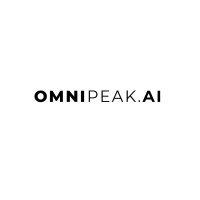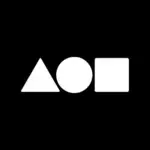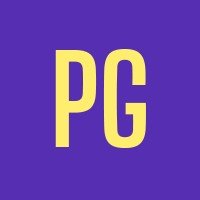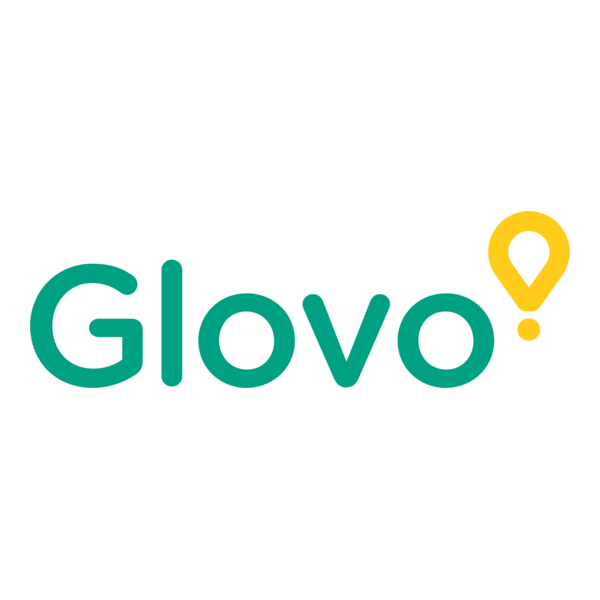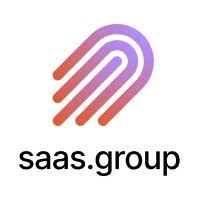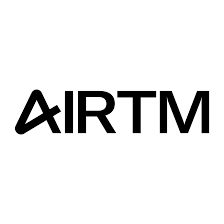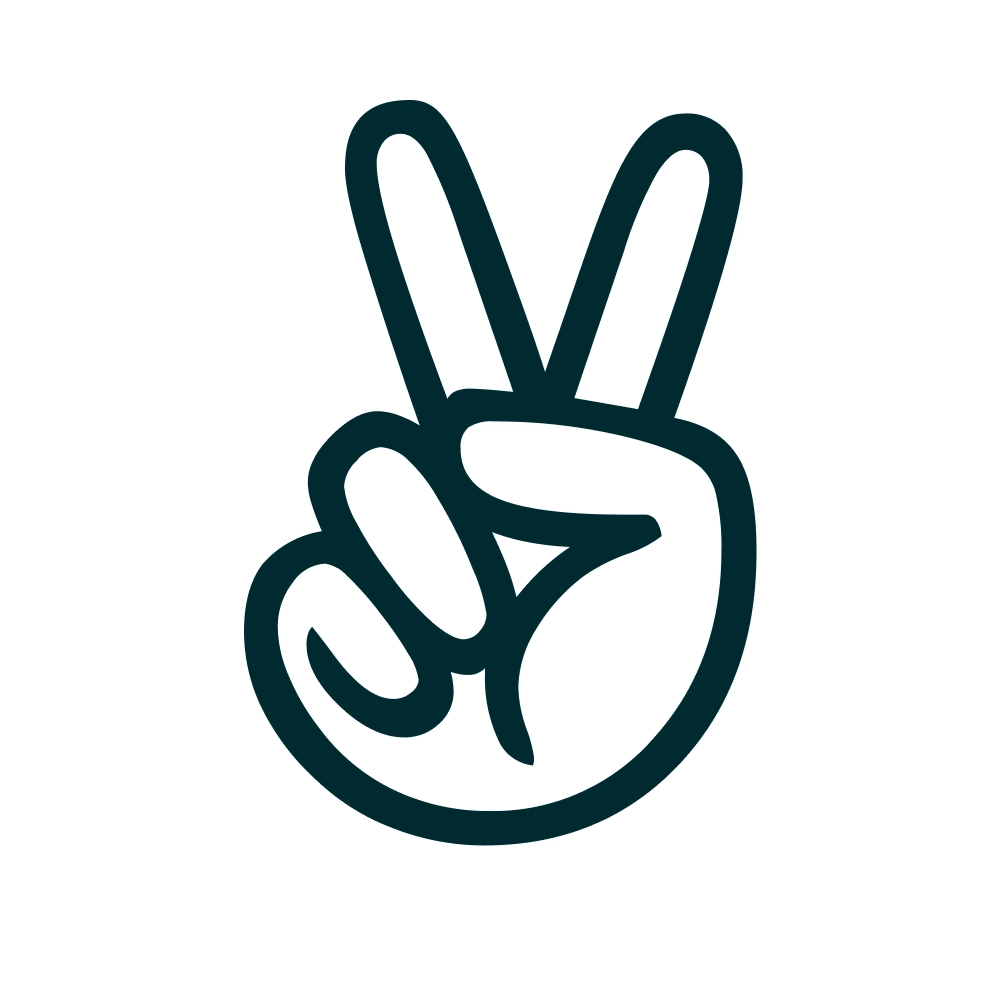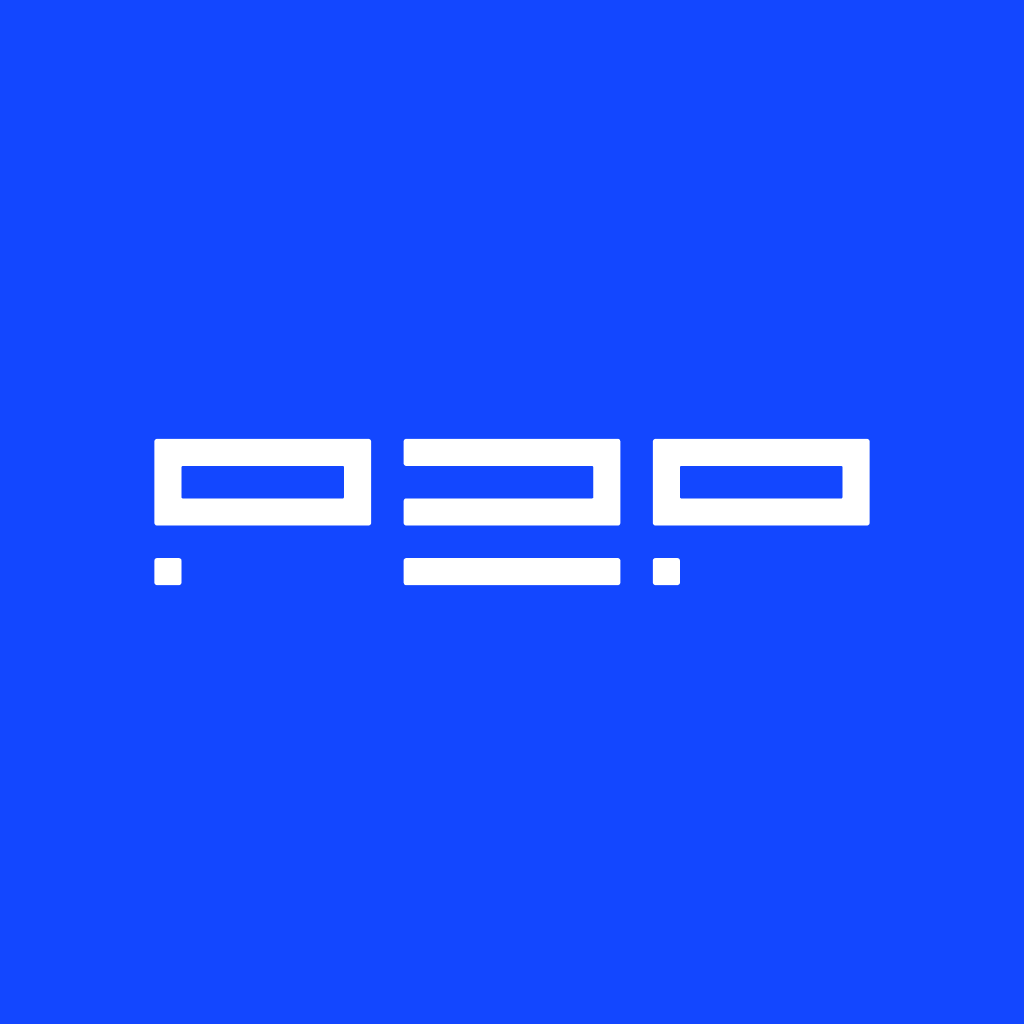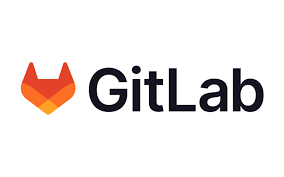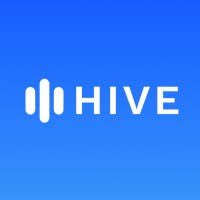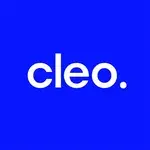Your Job Buddy
Get comprehensive advice on all things Job Search, starting with insight on what you career path can look like.
All your Questions in one GO
Career Discovery | Resume | Cover Letter | Interviews | Salary Negotiation
Looking for the role that best fits you?
Start Exploring!
Career Path Explorer
Discover potential career paths based on your interests and skills.
Recommended Paths
Fill in the fields above and click 'Explore' to see career recommendations.
Optimize Resume
What is the difference between a Resume and a CV, and which should I use for job applications?
Both Resumes and CVs are documents summarizing your professional history, but they differ in length, purpose, and content. In many countries, a resume is a brief, typically one to two page summary of your skills and experience tailored to a specific job. A CV is more detailed and comprehensive, often spanning multiple pages and providing an exhaustive record of your academic and professional achievements. For most job applications, especially in non-academic sectors, a resume is usually preferred due to its concise and targeted nature.
How should I tailor my Resume specifically for remote job applications?
Emphasize skills and experiences that are highly relevant to the job role.
Analyze the Job Description: Carefully read the job description to identify keywords, required skills, and key responsibilities. This is your blueprint.
Align Experience & Skills: Modify your work experience and skills sections to directly match what the job description is asking for. Use their keywords throughout your resume, especially in your professional summary and bullet points.
Customize Your Summary: Your professional summary or objective should highlight your most relevant experience and skills, directly addressing the specific role and company.
Showcase Relevant Skills: Create a dedicated “Skills” section, listing both hard skills (e.g., software, technical tools) and soft skills (e.g., communication, leadership) that are mentioned in the job description.
Quantify Your Achievements: Wherever possible, use numbers and data to demonstrate the impact of your work in previous roles. This shows concrete results.
Should I include a Cover Letter for job applications, and what should it emphasize?
Yes. With a Cover Letter, you have more opportunity to craft a compelling application.
- Personalize your application: Explain why you are specifically interested in the role and the company.
- Highlight remote work suitability: Expand on your resume by detailing your work skills, experiences, and successes in a narrative format.
- Address specific requirements: Directly address points in the job description, demonstrating how your skills and experience align with the role’s needs.
- Showcase your communication skills: A well-written cover letter demonstrates your written communication abilities, crucial for remote roles.
- Express enthusiasm for remote work: Convey your passion for remote work and your understanding of its benefits and challenges.
What are some common mistakes to avoid in my Resume when applying for jobs?
- Generic Resumes: Using a generic document that isn’t tailored to each job application.
- Poor Formatting: Using a format that is not ATS-friendly or is visually cluttered and difficult to read.
- Typos and Grammatical Errors: Errors reflect poorly on your attention to detail, especially important in remote roles where written communication is paramount. Proofread meticulously.
- Overlooking Keywords: Not incorporating relevant keywords, causing your resume to be missed by ATS and recruiters.
- Inconsistent Information: Ensure consistency in dates, job titles, and formatting throughout your resume.
- Too Long or Too Short: Resumes that are too lengthy or too brief may not effectively convey your qualifications. Aim for conciseness and relevance.
- Neglecting a Cover Letter: Skipping the cover letter, missing an opportunity to personalize your application and highlight your remote work suitability.
How can I showcase my work experience if I don't have any official remote work history?
- Internship: If you’ve done previous student internships, summer internships or undergraduate work.
- Online Courses or Certifications: Mention any online courses or certifications that demonstrate your technical skills or work capabilities.
- Personal Projects: If you have personal projects that showcase your skills and self-management. projects where you worked independently, managed teams, supported leadership and utilized tools.
- Volunteer Work: Volunteer experiences are also valuable to include. Social work, NGO or community associations, Events, etc.
What format should I use for my Resume?
- ATS-Friendly: Applicant Tracking Systems (ATS) are commonly used by companies to filter resumes. Choose a clean, simple format with standard fonts (like Arial, Calibri, Times New Roman) and avoid complex formatting, tables, or images that ATS might misinterpret.
- Chronological or Combination: A chronological format (listing experiences in reverse chronological order) is often preferred as it clearly showcases career progression. A combination format (highlighting skills and then chronological experience) can also be effective if you want to emphasize specific skills upfront.
- Clear and Concise: Ensure your resume is easy to read and navigate. Use bullet points, clear headings, and sufficient white space. Aim for conciseness, especially for resumes (ideally one page for less than 10 years of experience).
What keywords should I include in my Resume to get noticed for remote and flexible roles?
From the Job Description: This is the most crucial source. Directly pull out exact phrases, skills, and requirements mentioned in the job posting. If the job description says “proficient in SQL,” use “SQL” in your resume.
Industry-Specific Terms: Include jargon, technical terms, and acronyms common within your industry. For example, in marketing, “SEO,” “SEM,” “CRM,” or “Content Management Systems (CMS)” are common.
Hard Skills: These are measurable, teachable abilities. Examples include:
Software names (e.g., “Microsoft Excel,” “Adobe Creative Suite,” “Salesforce”)
Programming languages (e.g., “Python,” “Java,” “JavaScript”)
Tools and platforms (e.g., “Google Analytics,” “Jira,” “Slack”)
Technical methodologies (e.g., “Agile,” “Scrum,” “Lean Six Sigma”)
Soft Skills: While harder to quantify, these are essential for workplace success. Integrate them into your experience descriptions. Examples include:
“Communication” (written, verbal, presentation)
“Problem-solving”
“Teamwork” / “Collaboration”
“Leadership”
“Adaptability” / “Flexibility”
“Time Management” / “Organization”
“Critical Thinking”
Action Verbs: Start your bullet points with strong action verbs that describe your accomplishments and responsibilities. Examples include “Developed,” “Managed,” “Led,” “Implemented,” “Analyzed,” “Achieved,” “Optimized,” “Streamlined.”
Role-Specific Terms: Use terms directly related to the role you’re seeking (e.g., “Project Management,” “Data Analysis,” “Customer Success,” “Financial Reporting,” “UX Design”).
Where to Place Keywords:
Professional Summary/Objective: Front-load your most important keywords here.
Work Experience Section: Integrate them naturally into your bullet points describing responsibilities and achievements.
Skills Section: Create a dedicated section for technical and relevant soft skills.
Education Section: Include any relevant coursework or certifications that use keywords.
How can I make my Resume stand out from other candidate?
- Quantify Achievements: Use numbers and data to showcase the impact of your work, especially in remote settings.
- Showcase Results, Not Just Responsibilities: Focus on what you achieved in previous roles, not just your daily tasks.
- Use Action Verbs: Start bullet points with strong action verbs to make your accomplishments dynamic and impactful.
- Tailor to Each Job: Customize your resume for each specific remote job application, highlighting the most relevant skills and experiences.
- Include a Professional Summary/Profile: A strong summary at the beginning can quickly grab the recruiter’s attention and highlight your key qualifications for remote work.
- Proofread Meticulously: Error-free writing demonstrates professionalism and attention to detail.
- Seek Feedback: Ask career advisors or experienced professionals to review your resume and provide constructive criticism.
- Consider a Portfolio (if applicable): For roles in creative or technical fields, a portfolio showcasing your remote work samples can significantly enhance your application.
Need help planning for your Job search?
Check out our Checklist and Planner
Don't be caught off guard!
Craft Compelling Cover Letters
Is a Cover Letter Really Important?
While you might say it’s not needed in every application, a well-crafted cover letter enhances your job application.
- Personalization & Context: A cover letter allows you to personalize your application beyond your resume. It’s your chance to directly address the hiring manager, express your genuine interest in the role and explain why you are a great fit. Resumes primarily list your qualifications; cover letters connect those qualifications to the employer’s needs.
- Showcasing Your “Why”: A cover letter reveals your motivations, career goals, and understanding of the company’s mission and values. This demonstrates genuine enthusiasm and a deeper level of engagement than a resume alone.
- Highlighting Key Skills & Achievements in Context: You can expand on specific skills and achievements from your resume, providing context and demonstrating their relevance to the target job. Instead of just listing “communication skills,” you can describe a situation where your communication skills directly benefited a previous employer.
- Demonstrating Communication Skills: A well-written, error-free cover letter is a direct demonstration of your written communication abilities, which are highly valued in almost every profession. Poorly written cover letters, conversely, can immediately disqualify you.
- Addressing Gaps or Career Changes: Cover letters provide space to proactively address any potential questions a hiring manager might have, such as career gaps, industry changes, or non-traditional career paths. You can frame these aspects positively and explain your rationale.
What are the essential components of an effective cover letter?
- Professional Heading: Include your name, address, phone number, email, and LinkedIn profile URL (optional but recommended).
- Engaging Opening Paragraph: Immediately capture the reader’s attention. State the specific position you are applying for and where you saw the job posting. Briefly and enthusiastically express your interest in the role and the company.
- Body Paragraphs (Typically 2-3): This is the core of your letter.
- Paragraph 1 (Connecting Skills to Job Requirements): Focus on 2-3 key qualifications from the job description and demonstrate how your skills and experience directly align with these requirements. Provide specific examples and quantifiable achievements from your resume that illustrate your capabilities.
- Paragraph 2 (Company Interest & Value Proposition): Explain why you are interested in this specific company. Show you’ve researched them – mention their mission, values, recent projects, or industry reputation that resonates with you. Articulate what value you would bring to their team and how your contributions would benefit the organization.
- (Optional) Paragraph 3 (Addressing Specific Points or Adding Context): Use this paragraph to address any specific points mentioned in the job description, elaborate on a particular achievement, explain a career gap (if necessary), or further emphasize a unique skill or quality that makes you an ideal candidate.
- Strong Closing Paragraph: Reiterate your interest in the position and your enthusiasm for the opportunity to discuss your qualifications further.
- Professional Closing: Use a professional closing such as “Sincerely,” or “Best regards,” followed by your typed name.
How can I tailor my cover letter to each specific job application?
- Identify Key Requirements: Carefully analyze the job description and pinpoint the 3-5 most critical skills, experiences, and qualifications they are seeking.
- Create a Master Cover Letter Template: Develop a strong general cover letter that includes your core skills, experiences, and career summary.
- Customize Key Sections for Specific Applications: For each application, focus on customizing these sections of your template:
- Opening Paragraph: Always mention the specific job title and company name.
- Body Paragraphs: Directly address the 3-5 key requirements you identified. Select examples from your resume that are most relevant to this specific job. Research the company and tailor your interest to reflect your understanding of their specific goals and job requirements.
- Closing Paragraph: Emphasize your fit for role and company.
- Use Keywords from the Job Description: Include keywords from the job description naturally throughout your letter to align with ATS and recruiter searches.
- Proofread Carefully for Each Application: After customizing, proofread to ensure you’ve correctly changed company names, job titles, and tailored content, and that there are no generic phrases left from your template.
Are there any tools or resources I can use?
- Online Templates and Examples: Several websites offer cover letter templates and examples for various industries and job types. Use these as a starting point, but always customize and personalize them.
- Grammar and Spell Checkers: Use tools like Grammarly or built-in spell checkers to eliminate errors.
- Thesaurus: Use a thesaurus to vary your vocabulary and find stronger action verbs.
- Career Services/Advisors: If you are a student, alumni, or in career transition, utilize career services offered by your school or local organizations. Career advisors can provide personalized feedback on your cover letter.
- LinkedIn Profile Review: Ensure your LinkedIn profile is consistent with your resume and cover letter, as recruiters often check LinkedIn profiles.
- AI Writing Assistants (Use with Caution): AI writing tools can help with grammar, sentence structure, and generating initial drafts, but always carefully review and personalize AI-generated content. Ensure the tone and content are genuinely yours and tailored to the specific job. Don’t rely solely on AI to write your entire cover letter, as it can lack the personal touch and the relevance.
What kind of language and tone should I use in my cover letter?
- Professional and Formal: Maintain a professional tone, avoiding slang, overly casual language, or overly familiar greetings.
- Enthusiastic and Positive: Show genuine enthusiasm for the role and the company. Use positive and proactive language.
- Confident, Not Arrogant: Project confidence in your abilities without sounding boastful or arrogant. Focus on your skills and achievements, but also express humility and a willingness to learn.
- Concise and Clear: Use clear, direct language and avoid jargon or overly complex sentences. Get straight to the point and make your points effectively and efficiently.
- Action-Oriented: Use strong action verbs to describe your accomplishments and skills.
- Grammatically Correct and Error-Free: Proper grammar and spelling are essential. Proofread meticulously or use a grammar checker.
What are some common mistakes to avoid when writing a cover letter?
- Generic Content: Using a template without significant tailoring to the specific job and company.
- Repeating Your Resume: Simply restating what’s already on your resume without adding context, examples, or demonstrating your interest in the specific role.
- Focusing on “I” Too Much: While it’s about you, shift the focus to how your skills and experience will benefit them. Use “you” and “your company” as well as “I” and “my skills.”
- Typos and Grammatical Errors: These are unprofessional and can instantly disqualify you.
- Negative or Apologetic Tone: Avoid negativity about past employers or roles. Don’t be apologetic about career gaps; instead, frame them positively.
- Unprofessional Email Address or Formatting: Use a professional email address and ensure your formatting is clean, readable, and consistent with your resume.
- Forgetting the Call to Action: Not clearly stating your desire for an interview or next steps.
- Addressing the Letter Incorrectly: Using “To Whom It May Concern” when you could have found a hiring manager’s name, or misspelling names or company names.
Should I mention salary expectations in my cover letter?
- Focus on Value First: Your cover letter should focus on showcasing your value to the company and your qualifications for the role. Salary discussions can distract from this primary goal.
- Premature Negotiation: Bringing up salary too early can be seen as premature negotiation and might put you at a disadvantage.
- Information Asymmetry: You may not have enough information about the full compensation package at this stage to accurately discuss salary.
What if I have career gaps or a career change?
- Focus on Skill Development: If you used career gap time for skill development, education, volunteering, or personal projects, highlight these activities and how they have enhanced your skills and made you a stronger candidate.
- Connect Past Experiences to the New Role: Even if your past roles are in a different industry, identify transferable skills that are relevant to the target job and highlight these connections in your cover letter.
- Focus on the Future: While briefly addressing the past, shift the focus to your future contributions and how you are excited to apply your skills in this new role and at this company.
Ace Interviews
Generate role-specific interview quesions
Interview Question Generator
Sample Interview Questions:
Error:
What are some essential steps for effective interview preparation?
- Company Research: Go beyond the “About Us” page. Understand their mission, values, recent news, products/services, industry position, and competitors. Use resources like the company website, LinkedIn and Glassdoor.
- In-Depth Job Description Analysis: Identify the key skills, responsibilities, and qualifications they are seeking. Highlight these and prepare examples from your experience that directly match.
- Practice Answering Common Interview Questions: Prepare for questions like “Tell me about yourself,” “Why are you interested in this role?”, “What are your strengths and weaknesses?”, “Where do you see yourself in 5 years?”, and “Why should we hire you?”. Practice your answers out loud, focusing on clarity, conciseness, and STAR method examples.
- Prepare Questions to Ask the Interviewer: Asking thoughtful questions demonstrates your engagement and genuine interest. Prepare 3-5 questions about the role, team, company culture, or growth opportunities. Avoid questions about salary or benefits at this stage unless specifically brought up by the interviewer.
- STAR Method Mastery: Learn and practice the STAR method (Situation, Task, Action, Result) to structure your behavioral interview answers. This framework ensures your answers are clear, concise, and impactful, showcasing your skills effectively through specific and relatable examples.
- Prepare Talking Points: Outline 3-5 key selling points about yourself that align with the job requirements. You can infuse these talking points naturally into your answers throughout the interview.
- Anticipate Potential Questions: Think about your resume and anticipate questions the interviewer might ask based on your experience, skills gaps, or career history.
- Mock Interviews: Practice with friends, family, mentors, or career coaches. Mock interviews simulate the real interview environment and help you refine your answers, body language, and overall delivery. You can also record yourself to identify areas for improvement.
How can I use the STAR method?
- S – Situation: Describe the situation you were in. Set the context. Where and when did this event take place? Be brief but provide enough detail.
- T – Task: Explain the task you were assigned or the problem you needed to solve. What was your responsibility? What were you trying to achieve?
- A – Action: Detail the actions you took to address the situation or task. What specifically did you do? Focus on your individual contribution, even in a team setting.
- R – Result: Describe the results of your actions. What was the outcome? What did you achieve or learn? Quantify your results whenever possible (e.g., “increased efficiency by 15%”, “reduced customer complaints by 10%”).
What kind of questions should I prepare to ask the interviewer?
- Demonstrates Genuine Interest: It shows you’re not just passively seeking a job, but actively evaluating if this role and company are the right fit for you.
- Shows You’ve Done Your Research: Intelligent questions indicate you’ve researched the company and are thinking deeply about the opportunity. It also positions you as someone who is thorough when doing a task..
- Gives You Valuable Information: An interview is an opportunity to also vet the company. Your questions help you assess the company’s culture, team dynamics, growth opportunities, and challenges of the role, allowing you to make an informed decision if offered the job.
- Positions You as a Proactive Candidate: It portrays you as someone who is curious, engaged, and takes initiative.
Examples of good questions to ask an interviewer?
Examples of good questions to ask:
- Can you tell me more about the team I would be working with and their dynamics?
- What are the biggest challenges and opportunities facing the company/team in the next year?
- What does success look like in this role, and how will performance be measured?
- What are the opportunities for professional development and growth within the company?
- Can you describe the company culture in more detail?”
- What are the next steps in the interview process?
- Is there anything about my background or qualifications that I can clarify for you? Ask this at the end to address any potential concerns proactively).
How can I improve my non-verbal communication and body language in an interview?
- Eye Contact: Maintain consistent eye contact with the interviewer. This shows confidence, engagement, and sincerity. In video interviews, look directly at the camera as much as possible.
- Posture: Sit upright, lean slightly forward, and maintain an open posture. Avoid slouching or crossing your arms, which can convey disinterest or defensiveness.
- Hand Gestures: Use natural hand gestures to emphasize points and add dynamism to your communication. Avoid fidgeting or excessive hand movements.
- Facial Expressions: Smile genuinely and appropriately throughout the interview. Let your facial expressions reflect your enthusiasm and engagement.
- Tone of Voice: Speak clearly, confidently, and at a moderate pace. Vary your tone to maintain listener engagement. Avoid mumbling or speaking too quickly or slowly.
- Practice in Front of a Mirror or Camera: Record yourself answering practice questions and observe your body language. Identify any nervous habits or areas for improvement.
What is the best way to follow up after an interview?
- Send a Thank-You Email: Depending on how the interview went, you can send a thank-you email to the interviewer (if you have their individual email addresses; otherwise, send to the main contact). Emphasize your interest in the role, mention something specific you discussed during the interview to personalize the message, and thank them for their time and consideration. Keep it concise, professional and not forceful or pushy.
- Be Patient and Professional While Waiting: Understand that hiring processes take time. Be patient and avoid bombarding the hiring manager with follow-up emails. Adhere to any timelines mentioned during the interview. If you haven’t heard back within the expected timeframe, a polite follow-up email inquiring about the status is acceptable.
- Handle Rejection Gracefully: Rejection is a part of the job search process. If you receive a rejection, thank them for their time and consideration. Ask for feedback if possible (though they may not always provide it). View rejection as a learning opportunity. Reflect on what you could have done better and use it to improve for future interviews. Maintain a positive and professional attitude. Don’t burn bridges – you never know when opportunities might arise again at the same company or with the same people in the future.
How can I manage interview anxiety and build confidence before and during an interview?
- Thorough Preparation: The more prepared you are, the more confident you will feel.
- Practice and Mock Interviews: Practice reduces anxiety by familiarizing you with the interview format and questions.
- Positive Self-Talk and Visualization: Replace negative thoughts with positive affirmations. Visualize yourself succeeding in the interview.
- Deep Breathing and Relaxation Techniques: Practice deep breathing exercises or mindfulness techniques to calm your nerves before and even during the interview (briefly, if needed).
- Get Enough Rest and Eat Well: Ensure you are well-rested and have eaten a healthy meal before the interview. Physical well-being contributes to mental clarity and composure.
- Dress Professionally: Dressing professionally can boost your confidence and make you feel more prepared.
- Focus on Your Strengths and Value: Remind yourself of your skills, accomplishments, and the value you bring to the table. Focus on what you can offer, rather than dwelling on potential weaknesses.
- Take the Interview as a Conversation: Try to view the interview as a two-way conversation to see if the role and company are a good fit for you, not just as an interrogation.
- Remember They Chose to Interview You: The company saw something promising in your application to invite you for an interview. Remember that they are interested in you and your potential.
- Join Early: Joining an online interview early makes you settle in, test the internet connection, and ensure your tools (especially Computer) are all working properly. This prevents any last minute hiccups and tense moments. If you’re interviewing for an Hybrid ro;e and they require you have a physical interview at the last stage, make the appropriate arrangements to get to the location earlier, as that shows you’re professional, timely and respectful. It also helps you have a calm entry into the interview.
How can I continuously improve my interview skills over time?
- Seek Feedback After Every Interview: If possible, ask for feedback from interviewers (though they may not always provide detailed feedback). Even without formal feedback, reflect on each interview yourself – what went well? What could you improve?
- Keep a Journal or Interview Log: Document your interview experiences, including questions asked, your answers, what you felt went well, and areas for improvement. Review this log regularly to identify patterns and track your progress.
- Continuously Practice and Refine Your Answers: Don’t stop practicing after a few interviews. Continue to refine your STAR stories, talking points, and answers to common questions based on your interview experiences and feedback.
- Stay Updated on Industry Trends and Interview Best Practices: Read articles, watch videos, and attend workshops on interview skills and industry-specific interview trends. Interview techniques evolve, so continuous learning is key.
- Network and Seek Mentorship: Connect with professionals in your field and seek mentorship. Mentors can provide valuable advice and insights on interview preparation and career advancement.
Be a Better Salary Negotiator
Why are salary questions asked in job interviews?
- Screen Candidates: Ensure your salary expectations align with their budget for the role.
- Understand Your Market Value: Gauge your understanding of your worth in the current job market.
- Efficiency: Avoid wasting time interviewing candidates whose salary expectations are significantly outside their range.
How should I respond when asked about salary expectations in the initial interview?
In the early stages, avoid giving a specific number if possible. Your goal is to move to the next stage without prematurely pricing yourself out or underselling yourself.
- Deflect and Research: “Thank you for asking. To best answer, could you share the salary range budgeted for this role? Understanding the range will help me determine if my expectations are aligned. I’m very interested in learning more about the role and responsibilities first.”
- Provide a Broad Range (if pressed): If they insist on a range, give a broad salary range based on your research for similar roles and your experience level. Anchor the higher end of your range, but make it clear it’s a range and you’re open to discussion.
- Focus on the Role and Opportunity: “Salary is important, and I’m confident we can reach a mutually agreeable number. Right now, I’m most interested in learning more about the role, the team, and the opportunity to contribute to the company”.
How should I research salary ranges for the role I'm applying for?
- Salary Websites: Websites like Glassdoor, Salary.com, Payscale, and LinkedIn Salary provide salary ranges for various roles and locations. Compare data across multiple sites for a more comprehensive view.
- Industry-Specific Reports: Many industries have specific salary surveys or reports published by professional organizations or recruiting firms. Search for these relevant to your field.
- Networking: Talk to people in your network who work in similar roles or industries to get informal salary insights.
- Geographic Location Adjustment: Salary ranges vary significantly by location. Ensure your research is specific to the city and state where the job is based. Consider cost of living differences.
- Experience Level Adjustment: Salary ranges also vary based on experience level (entry-level, mid-level, senior). Research ranges appropriate for your years of experience and skill set.
What factors should I consider when determining my salary expectations?
- Your Experience and Skills: Quantify your experience and skills and how they directly benefit the role and company. More experience and specialized skills justify a higher salary.
- Cost of Living: Factor in the cost of living in the job location. A salary that seems high in a low-cost area might be inadequate in an expensive city.
- Company Size and Financial Health: Larger, more profitable companies often pay higher salaries. Research the company’s financial performance.
- Industry: Salaries vary significantly across industries. Some industries are generally higher paying than others.
- Benefits Package: Consider the value of benefits offered (health insurance, retirement plan, paid time off, stock options, etc.). A strong benefits package can offset a slightly lower base salary.
- Your “Breaking” Point: Determine your absolute minimum acceptable salary. Know your bottom line before entering negotiations.
What steps do I take in negotiating salary once I have a job offer?
- Negotiate the Entire Package, Not Just Base Salary: If base salary is less flexible, explore negotiating other aspects of the package, such as bonus, vacation time, professional development funds, or signing bonus.
- Justify Your Counter-Offer with Data: When making a counter-offer, clearly justify it based on your salary research, experience, and the value you bring to the role. Reference your research and specific skills.
- Focus on “Mutual Benefit”: Frame negotiation as a collaborative process to reach a mutually beneficial agreement. Emphasize your excitement about the role and your desire to find a compensation package that works for both parties.
- Be Confident and Professional: Negotiate with confidence and professionalism. Avoid being demanding or aggressive. Maintain a positive and collaborative tone.
- Be Prepared to Compromise (But Know Your Limits): Negotiation is about give-and-take. Be prepared to compromise on some aspects, but don’t go below your “Breaking” point.
- Ask for More Than Just Salary (If Appropriate): Consider negotiating for other benefits that are important to you, such as flexible work arrangements, professional development opportunities, or additional vacation time.
What should I do if the company cannot meet my salary expectations?
- Re-evaluate Your “Breaking” Point: If the offer is close to your minimum, and you are very excited about the role and company, consider if you are willing to compromise slightly, especially if other aspects of the package are strong (benefits, growth potential).
- Negotiate Non-Salary Benefits More Aggressively: If base salary is fixed, push harder for improvements in other areas like bonus, vacation, professional development, or a signing bonus.
- Ask for a Salary Review Timeline: If they can’t meet your salary now, ask for a clear timeline for a performance-based salary review (e.g., in 6 months or a year) with specific, measurable goals for a raise.
- Politely Decline if the Offer is Too Low: If the offer is significantly below your researched market value and they are unwilling to negotiate further, it’s perfectly acceptable to politely decline the offer. Thank them for their time and consideration, and express your regret that you couldn’t reach an agreement on compensation.
What are some common negotiation mistakes to avoid?
- Revealing Your Salary History (If Possible): In some locations, it’s illegal for employers to ask about salary history. If asked, try to deflect and focus on your expectations for the new role, not your past salary.
- Being the First to Name a Number (In Negotiation): Let the employer make the first offer if possible. This gives you more information to work with.
- Focusing Solely on Salary: Neglecting to consider the entire compensation package.
- Being Unrealistic or Uninformed: Making demands that are far outside of industry standards or company budget without justification.
- Being Emotional or Aggressive: Negotiation should be professional and respectful, not emotional or confrontational.
- Accepting the First Offer Immediately: Always take time to consider and potentially negotiate, even if the initial offer seems good.
- Forgetting to Negotiate at All: Many people leave money on the table by not negotiating. Salary offers are often starting points, not final offers.
Maxmising AI for Job Search
How can AI truly help me in my job search?
- Saving Time and Effort: AI can automate time-consuming tasks like job searching, resume tailoring, and interview preparation.
- Enhancing Application Quality: AI tools can help you optimize your resume and cover letter for specific jobs.
- Providing Data-Driven Insights: AI can analyze salary data, company reviews, and industry trends, empowering you to make informed decisions throughout your job search and negotiation process.
What are some AI tools I can use for job searching?
Automated Application Tools: Some AI platforms can automate the application process, filling out forms and submitting your documents to multiple jobs across various boards. Examples include LazyApply, Sonara, Careerflow.ai, Loopcv, JobCopilot, and AIApply.
Job Matchmakers: These tools use AI to analyze your skills and experience, then match you with highly relevant job opportunities that might be a great fit. You can check out tools like RippleMatch, Talentprise, Jobright.ai, and Autojob.
LinkedIn Profile Enhancers: AI tools can review your LinkedIn profile and suggest improvements to make it more attractive to recruiters and align with the roles you’re targeting. An example is Careerflow.ai.
What are some AI tools I can use to create resumes and cover letters?
AI Resume Builders/Writers: These platforms use AI to generate content for your resume sections (summary, experience, education) based on your input. They often include templates and formatting options to create a professional-looking document. Examples include Resume.io, Kickresume, Zety, Resume-Now, and MyPerfectResume.
Resume Optimizers/ATS Checkers: These tools analyze your existing resume against a specific job description. They identify missing keywords, suggest stronger phrasing, and provide a “match score” to help your resume pass Applicant Tracking Systems (ATS). You can check out tools like Jobscan, Teal, Rezi.ai, Resume Worded, Enhancv, and SkillSyncer.
AI Cover Letter Generators: Provide your resume and a job description, and these tools can draft personalized cover letters, emphasizing how your skills and experience align with the role. Examples include Grammarly’s AI, Cover Letter Copilot, and LazyApply’s AI Cover Letter Generator.
What are some AI tools I can use for interview preparation?
AI Mock Interview Platforms: These tools simulate actual interview scenarios, asking common and often role-specific questions. They record your responses and provide instant feedback on your content, delivery, pacing, and even non-verbal cues like eye contact and filler words. Examples include Interview Warmup by Google, Huru, Interviews by AI, Interview Prep AI, AMA Interview, Himalayas Plus, Rezi.ai, Big Interview, and Interviewing.io.
AI Interview Coaching Tools: Beyond just mock interviews, these platforms offer more in-depth analysis and personalized coaching. They can identify weaknesses in your responses, suggest improvements based on proven interview frameworks (like STAR method), and help you refine your storytelling. You can explore tools such as Skillora, Yoodli, and Richard McMunn’s Interview Coach.
Real-time Interview Assistants (for practice only): While not for use during actual interviews, some AI tools are designed to provide real-time suggestions and transcriptions during practice sessions, helping you formulate better answers on the spot. Examples of tools with these features for practice include AIApply’s Interview Answer Buddy, Verve AI, and Final Round AI’s Interview Copilot.
What are the limitations of using AI in the job search?
- Emotional Intelligence and Interpersonal Skills: AI cannot replicate human empathy, subtle communication, relationship building, and emotional intelligence, which are essential for networking, building rapport in interviews, and navigating.
- Creativity and Innovation: While AI can analyze data and patterns, it is still limited in its ability to generate truly original and creative ideas or solutions, which are often highly valued in certain roles.
- Critical Thinking Complex Problem Solving (beyond algorithms): AI may not excel in human critical thinking, judgment, and the ability to handle ambiguous problems.
- Contextual Understanding: AI may struggle with understanding specific scenarios, cultural context and unspoken communication cues that humans naturally grasp.
- Ethical Judgment and Decision-Making: AI algorithms are based on data and rules, and may not always be equipped to make complex ethical judgments or navigate situations requiring human values and principles.
How can AI help me answer interview questions more effectively, especially tricky behavioral questions?
Tailored Questions: AI generates relevant questions, including behavioral ones, based on the specific job and your resume.
Mock Interview Feedback: Practice with AI simulators that give instant feedback on your content, delivery, and pacing.
STAR Method Guidance: AI evaluates your answers for the Situation, Task, Action, and Result (STAR) structure, helping you tell compelling stories.
Content Optimization: Get suggestions to include key job description keywords and industry terms in your responses.
Delivery Refinement: Some tools analyze your vocal tone and non-verbal cues for confident and clear communication.
Iterative Practice: Continuously refine your answers through repeated practice and AI feedback until they’re impactful.
How can I build a cohesive job search strategy to utilise AI?
Centralize Information: Keep a master document (or use a dedicated job search tracker like Careerflow.ai’s tracker) where you store your core resume information, relevant job descriptions, and customized cover letter snippets. This makes it easy to feed consistent information into different AI tools.
Iterate and Refine: Don’t just use an AI tool once. After applying for a few jobs, review your results. Are you getting interviews? If not, go back to your resume optimizer and re-evaluate. Use interview feedback to refine your practice with AI simulators.
Maintain Human Oversight: AI is a powerful assistant, not a replacement. Always review and personalize anything generated by AI. Ensure the tone aligns with your personality and the company culture. Employers can often spot generic, AI-generated content.
Balance Quantity with Quality: While automation tools can apply to many jobs, prioritize quality applications for your top choices by heavily customizing with AI optimizers, then using automated tools for broader reach.
Learn from AI, but Don’t Rely Solely: Use AI to understand what employers are looking for, improve your communication, and gain confidence. However, remember your unique experiences and genuine enthusiasm are what ultimately land you the job.
Stand Out with a Jobsett Resume Profile!
Create your resume in minutes and start applying to Jobs


